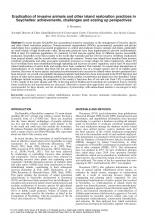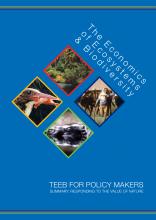Eradication of invasive animals and other island restoration practices in Seychelles: achievements, challenges and scaling up perspectives


Island and Ocean Ecosystems, BRB
Available Online
In recent decades Seychelles has accumulated extensive experience in the management of invasive species and other island restoration practices. Non-government organisations (NGOs), governmental, parastatal and private stakeholders have conducted successful programmes to control and eradicate invasive animals and plants, particularly on small islands of high biodiversity value. Biosecurity protocols have been implemented to prevent (re)infestations. With at least 50 vertebrate populations (33 mammal, 16 bird and one reptile) from 14 different species successfully eradicated, Seychelles is the third country in the world after Australia and the USA for invasive vertebrate eradications from tropical islands, and the seventh when considering all countries. Twenty-four islands have bene?ted from invasive vertebrate eradications and other ecosystem restoration processes to create refuges for native biodiversity. About 470 ha of woodland have been rehabilitated through replanting and recovery of native vegetation, and at least 36 successful island translocations of native birds and reptiles have been conducted. This includes 16 conservation introductions or reintroductions of six endemic land birds (all but one threatened), two of a terrapin species and 18 of Aldabra giant tortoises. Recovery of native species and natural recolonisations have occurred on islands where invasive predators have been removed. As a result, four globally threatened endemic land birds have been down-listed in the IUCN Red List and dozens of other native species including seabirds, land birds, reptiles, invertebrates and plants have also bene?ted. Future challenges include increasing the proportion of the countrys land area free of rats and cats from 3.9% to potentially 15.4%, mainly in the outer islands, and 50% in the long term if Aldabra and Cosmoledo are considered. Factors limiting future eradications and translocations are discussed. Alternative conservation approaches such as mainland-islands are recommended for large islands, and the development of partnerships with nature-based tourism is encouraged to help fund further restoration.



